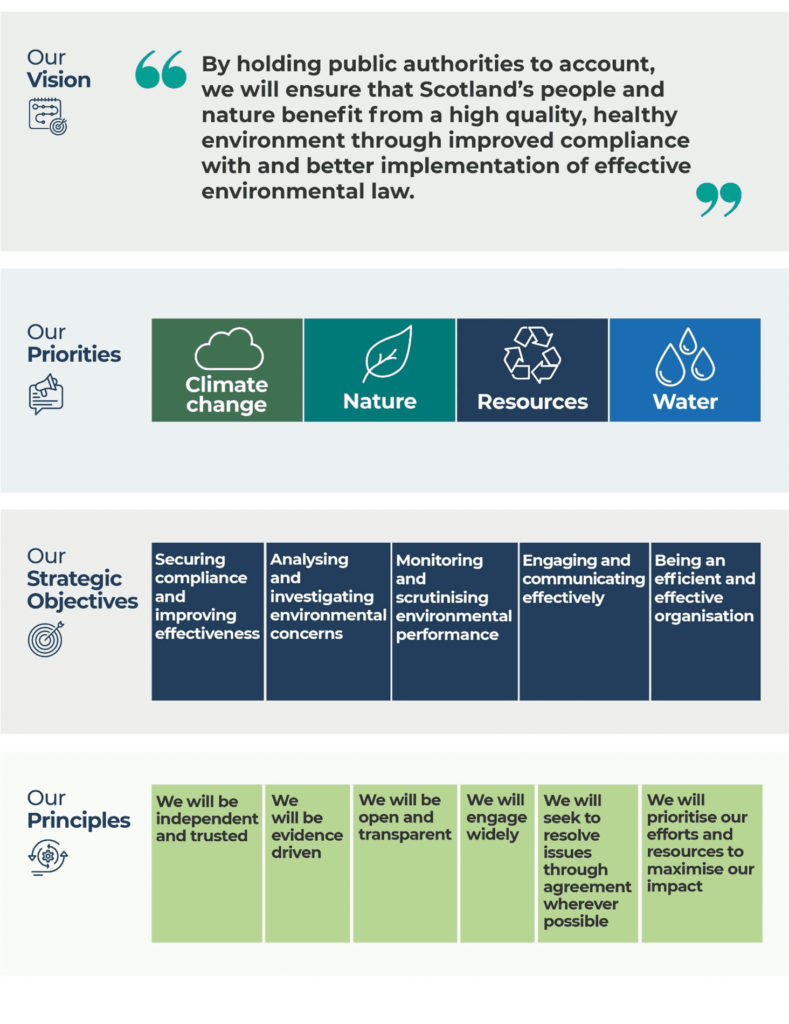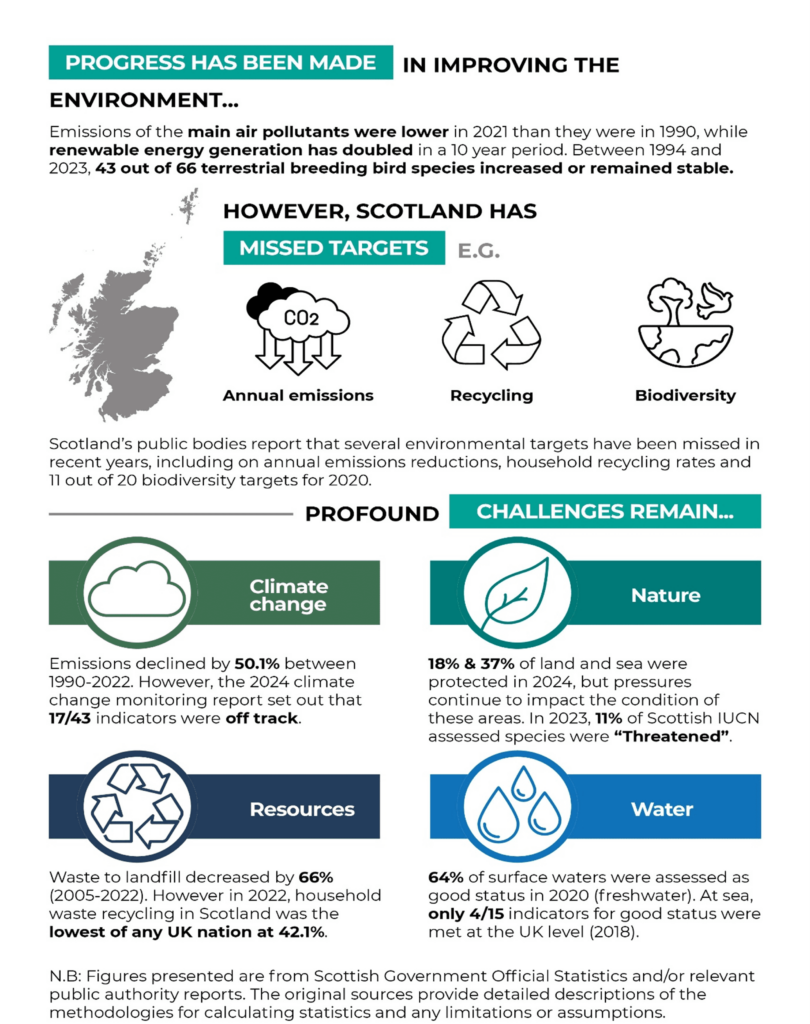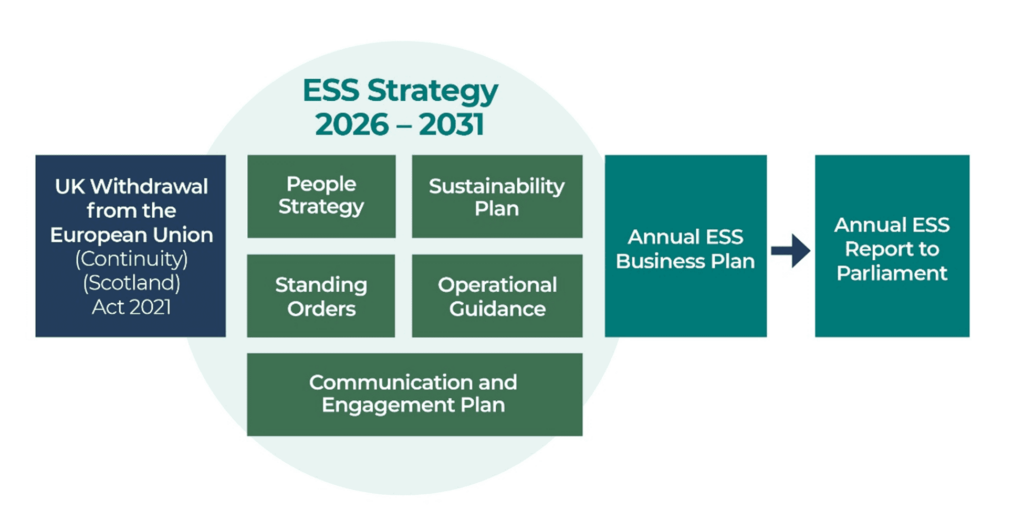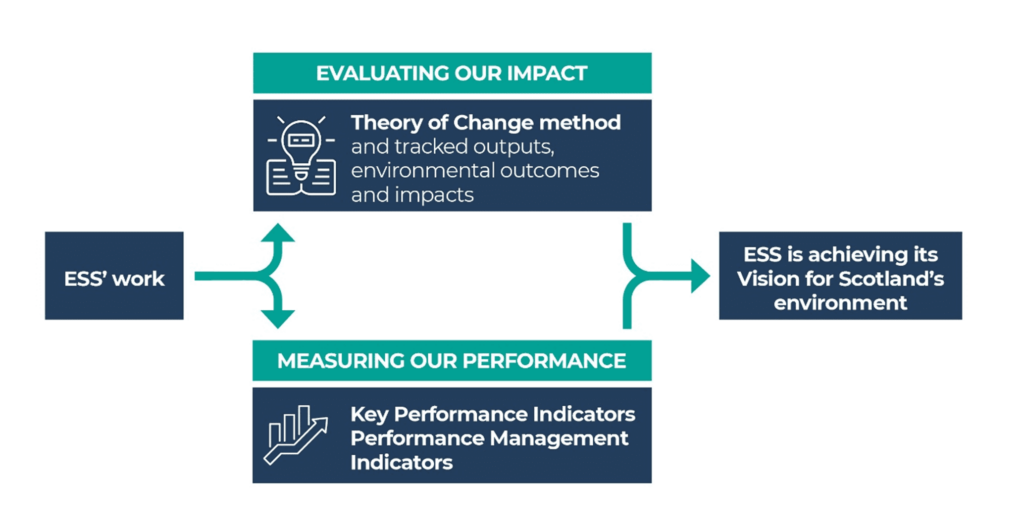Objective 1. Securing compliance and improving effectiveness
Objective 2. Analysing and investigating environmental concerns
Objective 3. Monitoring and scrutinising environmental performance
Objective 4. Engaging and communicating effectively
Objective 5. Being an efficient and effective organisation
Objective 1. Securing compliance and improving effectiveness
4.1 Environmental law exists to protect and improve the environment and human health. Public authorities have an essential role to play in complying with environmental law and ensuring that it is implemented effectively. ESS has significant statutory powers to secure public authorities’ compliance with environmental law and to bring about improvements to the effectiveness of environmental law and how it is implemented or applied (Table 1), with the aim of protecting and improving the environment and public health.
Table 1 – ESS’ Statutory Powers
| Information
notice |
Requires a public authority to provide us with any information we need |
| Improvement report |
Report to the Scottish Parliament setting out what a public authority must do to comply with environmental law or to improve effectiveness. Scottish Ministers must then lay an Improvement Plan in Parliament for approval |
| Compliance notice |
Requires a public authority to take steps to address a failure to comply with environmental law and to prevent that failure being repeated |
| Judicial review |
Enables us to apply for judicial review or to intervene in other civil court proceedings where there is a serious failure to comply with environmental law or where there is a risk of serious environmental harm |
4.2 ESS will take the action it considers necessary to ensure public authorities’ compliance with environmental law, or to improve the effectiveness of environmental law, or in how it is implemented or applied. In line with the Continuity Act, we will seek to reach agreement with public authorities on action needed to protect the environment before using our statutory powers. Reaching agreement with public authorities is a fundamental element of our approach to enforcement. However, if we decide it is necessary we will use our powers. By law, public authorities must co-operate with ESS to resolve matters quickly. Our approach to enforcement is set out in our guidance.
4.3 The type of enforcement action we take will depend on the form the failing takes and the consequences (or potential consequences) of it. In deciding what action is required, ESS will take into account whether immediate action is required to protect the environment. Enforcement action can result from any part of our investigatory, analytical or monitoring work. Where we decide to take enforcement action, we will be clear on the outcomes required and will ensure the necessary steps are taken within agreed timescales. We will report publicly on all enforcement action, including the results of our longer-term monitoring of the environmental outcomes achieved.
Objective 2. Analysing and investigating environmental concerns
4.4 Ensuring that we analyse and investigate the most important environmental concerns is fundamental to ESS’ work. We have two mechanisms to do this (Figure 3):
- individual members of the public, community groups, whistleblowers and organisations can highlight concerns (we call these “representations”)
- our own proactive monitoring, analytical and engagement work can highlight areas of concern about the environment and may result in detailed investigatory work
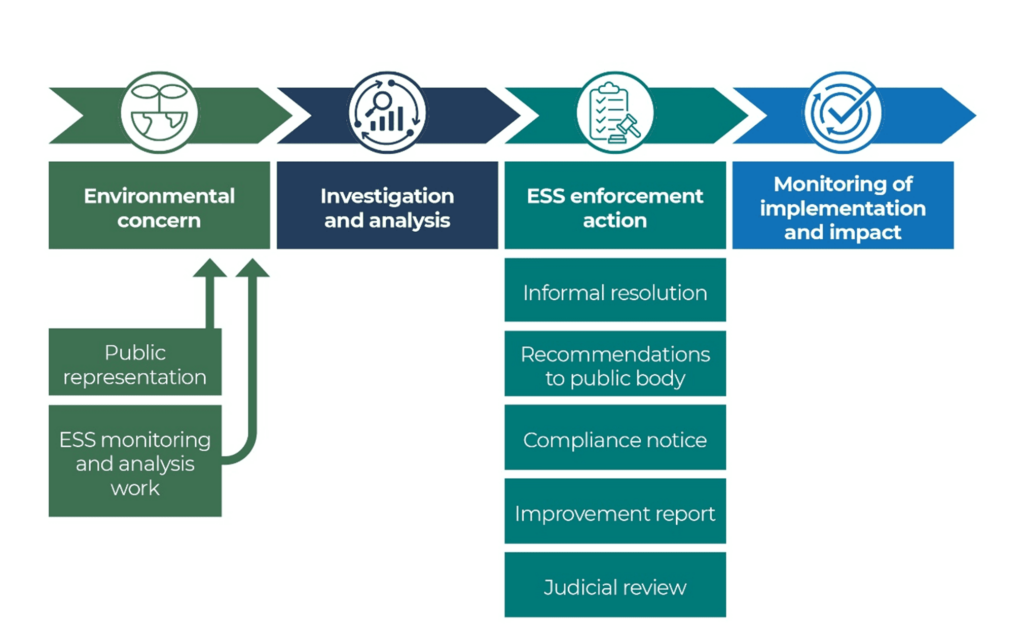
Figure 3 – ESS’ process for scrutinising environmental concerns
4.5 We will undertake work on the concerns identified using the criteria set out at section 3.5 before deciding what next steps to take. We will also seek external expert advice if we consider it necessary to reach a full and robust decision. Our detailed approaches to our analytical and investigatory work are available on our website. Our analytical work may lead to investigatory work or may be published in its own right. It may also contain recommendations that we expect public authorities to respond to.
4.6 If an issue brought to us is not within our remit, or we decide not to take it forward, we will explain why. We will provide as much assistance as possible, including signposting to other organisations that are better placed to help.
4.7 In all our analytical and investigatory work we will consider relevant international obligations, standards and laws. We will pay particular attention to keeping pace with positive developments in environmental policy, law and regulation in the European Union and will also look globally to identify further examples of good practice.
Objective 3. Monitoring and scrutinising environmental performance
4.8 Understanding the state of the Scottish environment through data, evidence and research will allow ESS to identify areas where there may be non-compliance with environmental law, or where performance or progress is inadequate to meet Scotland’s ambitions.
4.9 We will cast our net widely, bringing together and synthesising evidence from a range of sources. Occasionally, where existing evidence is insufficient to enable us to draw conclusions, we may commission work or identify where further research and evidence gathering is required by others.
4.10 Whilst maintaining our independence ESS will also strive to be a well networked and connected organisation. To achieve this we will engage widely with other organisations that collect data on the environment and which scrutinise and evaluate environmental performance and the effectiveness of environmental law. We will seek opportunities to bring together and to work in partnership with others to drive improvements in how data and evidence on Scotland’s environmental performance is monitored and reported.
4.11 We may issue our own calls for evidence to gather insights from those involved in implementing environmental law about how it is working in practice and whether the tools and measures available are sufficient and effective.
4.12 We will respond to consultations and calls for views on environmental law from the Scottish Parliament, the Scottish Government and other public authorities. Our growing body of work in this area will provide insights into how environmental law can be established, improved or implemented most effectively.
4.13 Over the period of this Strategy, we will prepare for, integrate and then start delivering new aspects of scrutiny, including:
- scrutinising local authorities’ delivery and reporting of their statutory climate change duties
- acting as the Independent Review Body scrutinising progress towards delivery of Scotland’s statutory targets for nature recovery (as proposed in the Natural Environment (Scotland) Bill currently before Parliament)
Objective 4. Engaging and communicating effectively
4.14 To realise ESS’ vision, we must communicate and engage effectively. Drawing on our principles, our approach to communications and engagement will be:
Independent – we will communicate with a clear, authoritative voice, including when we explain the results of our scrutiny work
Trusted – we will ensure that the content of all our work is factual and objective
Transparent – we will make all our procedures, updates on our progress and our completed work public and accessible
Effective – we will ensure that we explain why our work is relevant to the people of Scotland and the Scottish environment
4.15 Being a well-connected and networked organisation is critical to ESS’ ability to fulfil its functions effectively and efficiently. We will engage regularly, and at a variety of levels, with a broad range of stakeholders, including the public authorities we scrutinise. We will engage widely to raise the profile of ESS and increase understanding of our remit and our work and will seek to collaborate with other bodies whose work aligns with our goals. Strong relationships with our stakeholders will ensure:
- ESS’ accountability
- the ability of the public to raise concerns with ESS
- knowledge and evidence exchange across the environmental governance system
- understanding of the different roles of different bodies
- assurance that we are adding value through our work
4.16 We will continue to engage in person with communities across Scotland to understand and discuss the environmental issues which affect them. This programme will help ensure ESS’ role is widely understood and that communities and individuals are confident in raising their environmental concerns with us.
4.17 ESS is accountable to the Scottish Parliament. To complement our statutory annual reporting, we will provide the Parliament with regular updates on our work and respond to requests to contribute to scrutiny and other work.
Objective 5. Being an effective and efficient organisation
4.18 ESS is led by a Board of between five and seven members. Scottish Ministers appoint board members using a regulated appointments process, following approval from the Scottish Parliament. The Board’s operation is governed by its Standing Orders. ESS’ Framework Document sets out the relationship between ESS, the Scottish Parliament and Scottish Ministers with regards to governance, finance and the operation and functions of the organisation.
4.19 We have a team of skilled, motivated people with a broad range of professional expertise. They are organised into three departments: Corporate Services and Communications; Investigations, Standards and Compliance, and Strategy and Analysis. We have a blend of different contract types (permanent and fixed-term contracts, secondments, and internships/placements). We aim to have a professional and trusting working culture with respect and empowerment being at the core of how we work. We will ensure that all members of our team are able to continue to develop and have the space and opportunity to try new ideas and innovations.
4.20 ESS’ People Strategy is made up of three pillars:
- attracting and keeping the right people
- developing and nurturing our people
- enabling great performance and delivery
4.21 We prioritise diversity, equality and inclusion and wellbeing in everything we do. This is reflected through our Equalities and Diversity Policy principles of respect, inclusivity, fairness.
4.22 We complement our team with support from other organisations. This includes operational advice such as legal, human resources and information technology advice. In the context of the wider public service reform agenda, we will explore opportunities to collaborate with others, beyond our current arrangement of sharing our office with another public body.
4.23 ESS must meet the public sector duties set out in the Climate Change (Scotland) Act 2009 and the Nature Conservation (Scotland) Act 2004. Our Sustainability Plan sets out our approach to reducing emissions, contributing to reaching net zero by 2045 and furthering the conservation of biodiversity and aspires to be an example of good practice.
4.24 We operate in accordance with the Public Finance and Accountability (Scotland) Act 2000 and the Scottish Public Finance Manual. We have secure governance and financial management and effective corporate functions. We will continue to maintain a clear approach to how we allocate and prioritise our spending to ensure best value.
4.25 Every year, we will write to the Scottish Parliament setting out whether we consider the draft budget allocated to ESS to be sufficient for the following year. Within our annual report, we will report on whether ESS’ budget enabled us to deliver our functions during the preceding year. Our annual report will also report on our progress in delivering our strategic objectives.
4.26 We will publish an Annual Business Plan at the start of each financial year. This will set out the work we plan to do and the outputs we aim to publish. We plan to review our Strategy during 2031 and submit a revised Strategy to the Scottish Parliament for approval by the end of that year.

